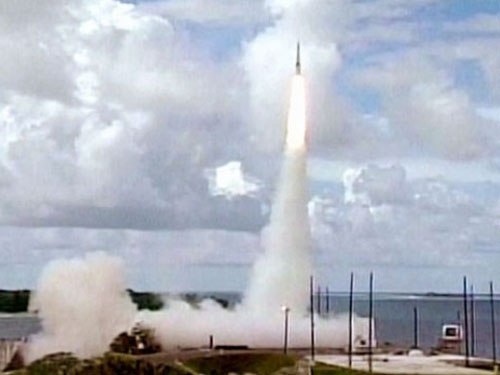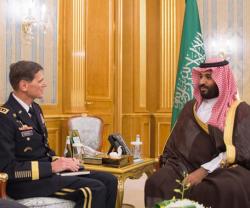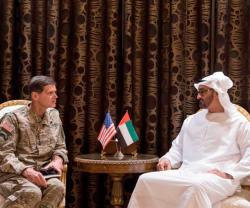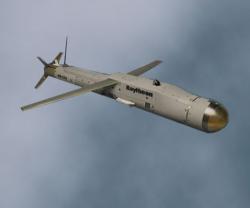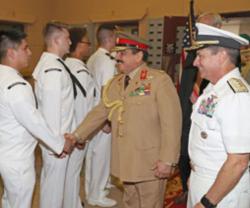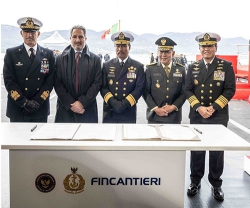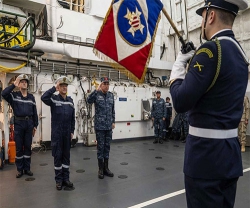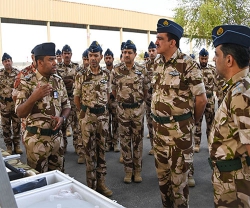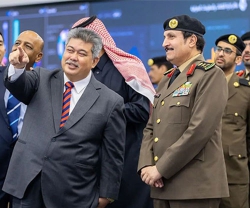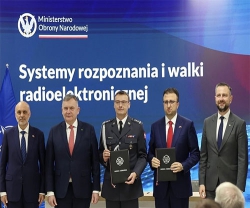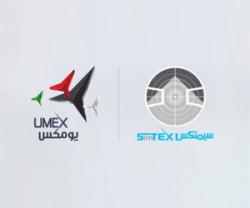The U.S. nuclear arsenal, the most powerful but indiscriminate class of weapons ever created, is set to undergo the costliest overhaul in its history, even as the military faces spending cuts to its conventional arms programs at a time of fiscal crisis.
For two decades, U.S. administrations have confronted the decrepit, neglected state of the aging nuclear weapons complex. Yet officials have repeatedly put off sinking huge sums into projects that receive little public recognition, driving up the costs even further.
Now, as the nation struggles to emerge from the worst recession of the postwar era and Congress faces an end-of-year deadline to avoid $1.2 trillion in automatic cuts to the federal budget over 10 years, the Obama administration is overseeing the gargantuan task of modernizing the nuclear arsenal to keep it safe and reliable.
There is no official price tag for the effort to upgrade and maintain the 5,113 warheads in the inventory, to replace old delivery systems and to renovate the aging facilities where nuclear work is performed. A study this summer by the nonpartisan Stimson Center, a Washington think tank, estimated costs would be at least $352 billion over the coming decade to operate and modernize the current arsenal. Others say the figure could be far higher, particularly if the work is delayed even longer.
The timing does not fit with the nation’s evolving defense posture, either. Over the past decade, the U.S. military has moved away from nuclear deterrence and major military interventions in favor of more precise tactics rooted in Special Operations forces and quick tactical strikes deemed more effective against today’s enemies.
Federal officials and many outside analysts are nonetheless convinced that, after years of delay, the government must invest huge sums if it is to maintain the air, sea and land nuclear triad on which the country has relied since the start of the Cold War. Failing to act before the end of next year, they say, is likely to mean that there won’t be enough time to design and build the new systems that would be required if the old arsenal is no longer safe or reliable.
“I’ve been doing this for 20 years, and I haven’t seen a moment like this,” Thomas P. D’Agostino, who leads the National Nuclear Security Administration (NNSA), the federal agency charged with managing the safety of the nuclear arsenal, said in an interview.
The debate over the future of the US nuclear arsenal is playing out in Congress and within the administration. Public reports, interviews with government officials and outside experts and visits to nuclear facilities rarely seen by outsiders provided a portrait of the scope and cost of maintaining and refurbishing the nuclear stockpile underlying the debate.
At the heart of the overhaul are the weapons themselves. Renovating nuclear bombs and missiles to keep them safe and ready for use will cost tens of billions of dollars. Upgrading just one of the seven types of weapons in the stockpile, the B61 bomb, is likely to cost $10 billion over five years, according to the Pentagon. The next two types of bombs in line for modification are estimated to cost a total of at least $5 billion. By comparison, the operating budget for Fairfax County government next year will cost about $3.5 billion, including its vaunted school system.
Replacing the aircraft, submarines and ground-launch systems that carry nuclear payloads will be the most expensive budget item. The nonpartisan Congressional Budget Office estimated it would cost up to $110 billion to build 12 replacements for the aging Ohio-class submarines first launched in the 1980s. The Minuteman III ballistic missiles are undergoing a $7 billion upgrade even as a new generation of intercontinental ballistic missiles is under consideration. Meanwhile, a nuclear-capable fleet of F-35 strike aircraft is being built to replace existing aircraft at a cost of $162 million an airplane.
Finally, there are the buildings and laboratories where the refurbishment of weapons and development of new technologies take place. Modernizing those facilities is expected to cost at least $88 billion over 10 years, according to the NNSA, which is part of the Department of Energy.
Source: The Washington Post; Photo: Reuters

